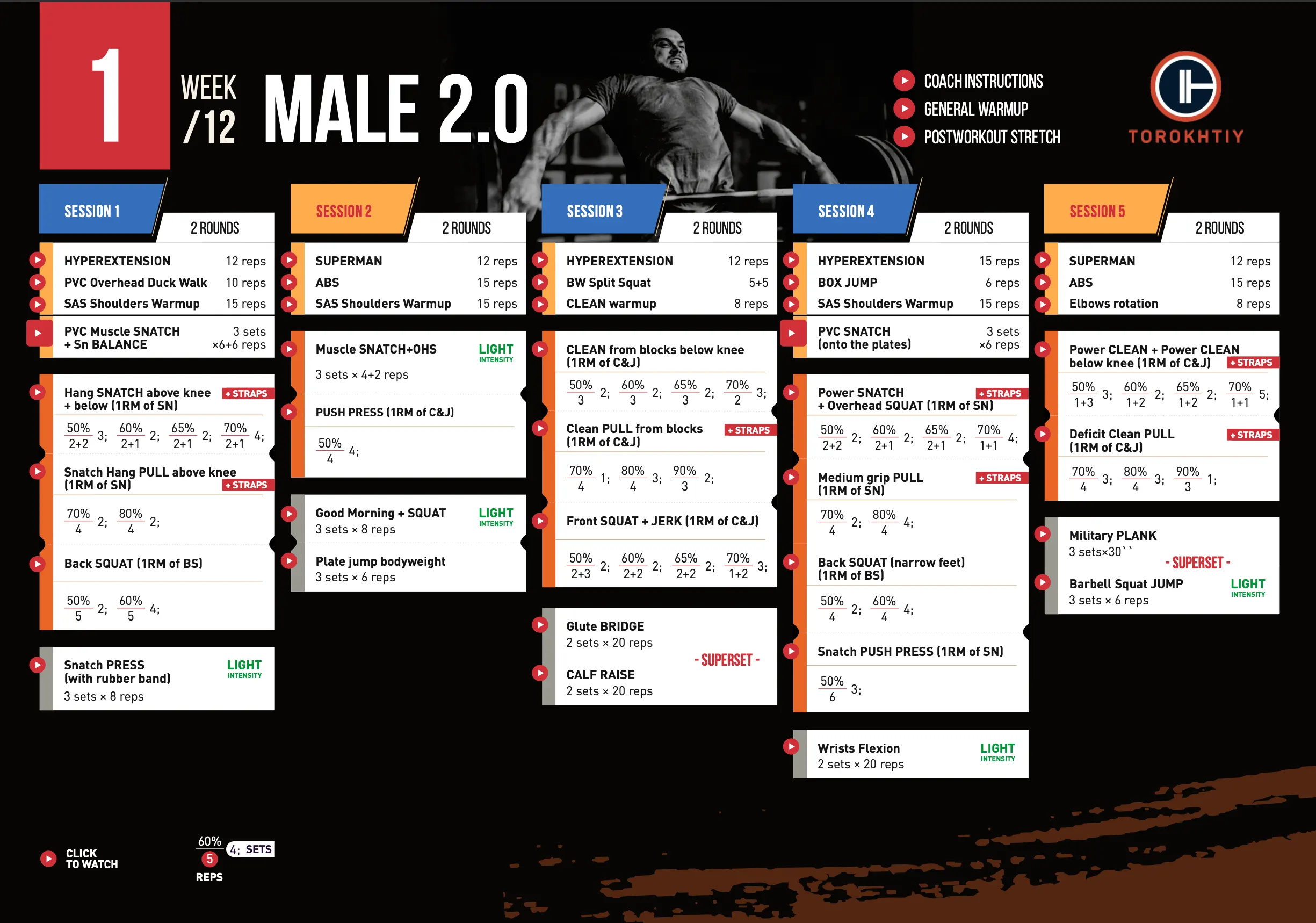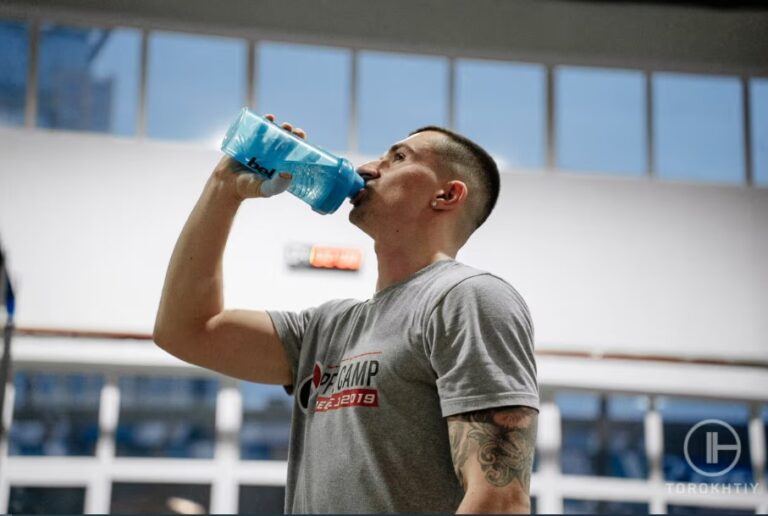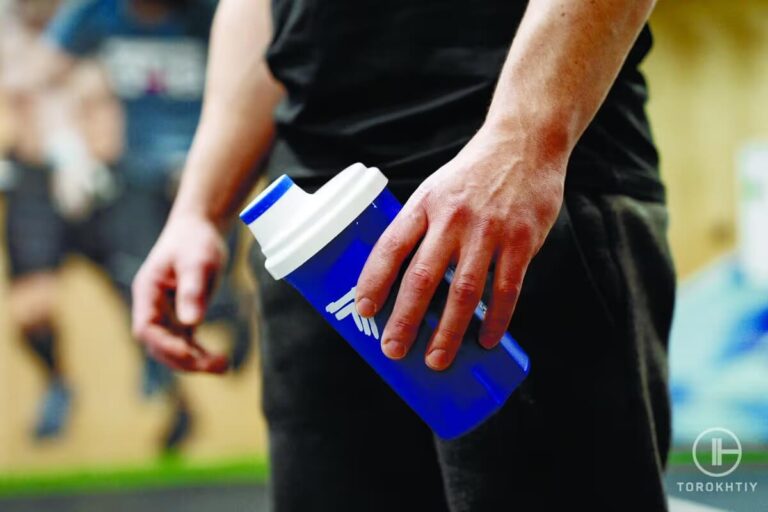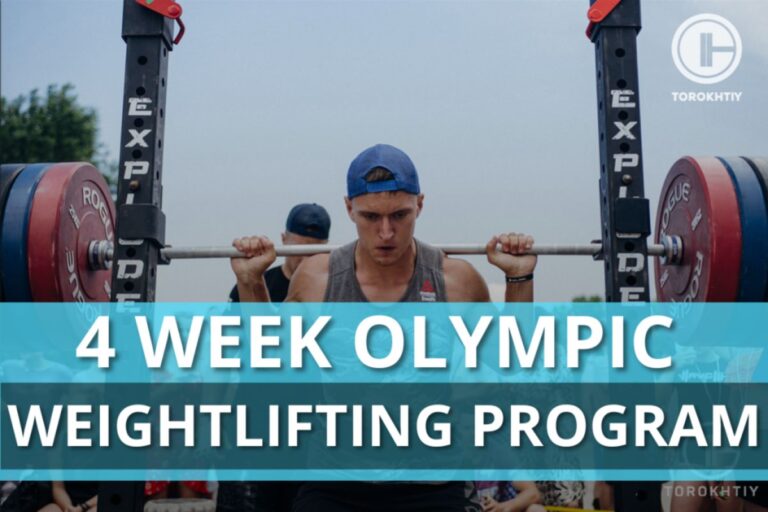Jerk Grip Width
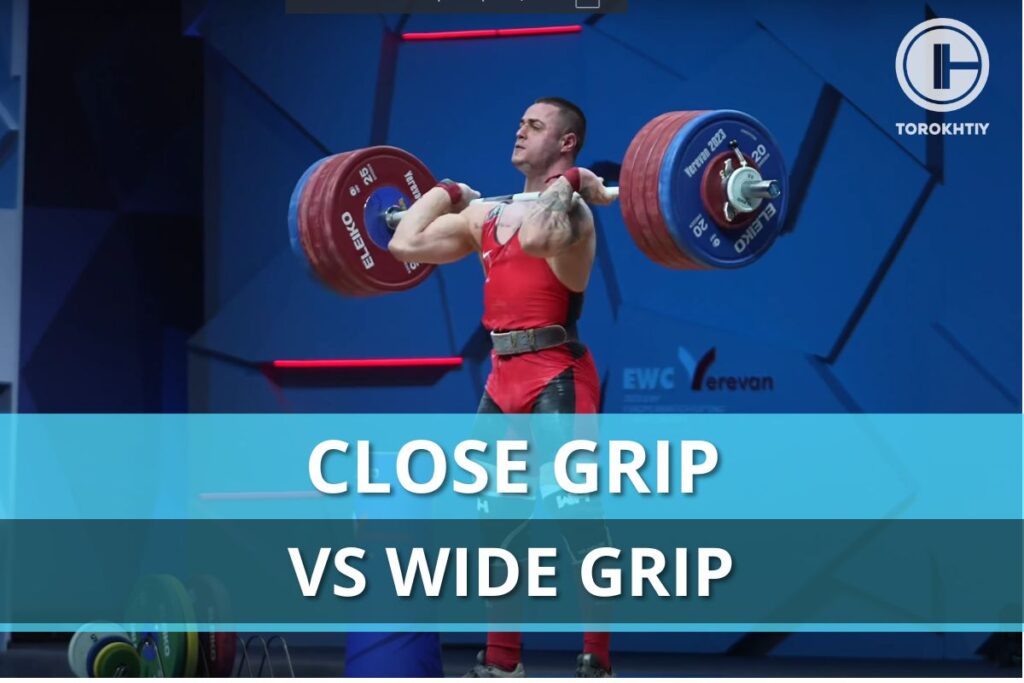
This article also available as audio. Check this out!
Subscribe and listen it anywhere:
Jerk grip width is a popular question, which is actively discussed on many forums, blogs and social networks. In my opinion, there are two reasons for that: firstly, it is hard for everyone to perform the jerk after the clean, because this is the second phase of the exercise and the barbell is already heavy; and secondly, we see that even TOP athletes successfully apply a variety of styles to perform jerk.
One of the specific details of the jerk is the grip width: the practice shows that it can vary from fairly narrow (slightly wider than the shoulder width) to extremely wide – almost a snatch grip.
Interesting fact: most of the modern athletes call a jerk performed with a wide grip Colombian style. When, in fact, Bulgarian weightlifters demonstrated this method for the first time in competitions as early as the 80s. Of course, everybody started talking about the “Bulgarian grip” then. But time passed and a whole galaxy of Bulgarian coaches went to work in Latin America, where they brought up a new generation of weightlifters, who successfully began to use this Bulgarian peculiarity.

Let’s try to understand the features of these positions. In the textbook on weightlifting there is no clear definition of the jerk grip width as there is for a snatch, for example, where it is fundamentally important. Most often we hear a basic recommendation – the grip must be “slightly wider than shoulder width”, otherwise our wrists will simply lay uncomfortably on the shoulders. Too narrow grip creates the risk of a round and relaxed back, I think no need to continue …
Nowadays, most athletes, especially in functional training, use this jerk style. Indeed, this position gives a number of biomechanical advantages:
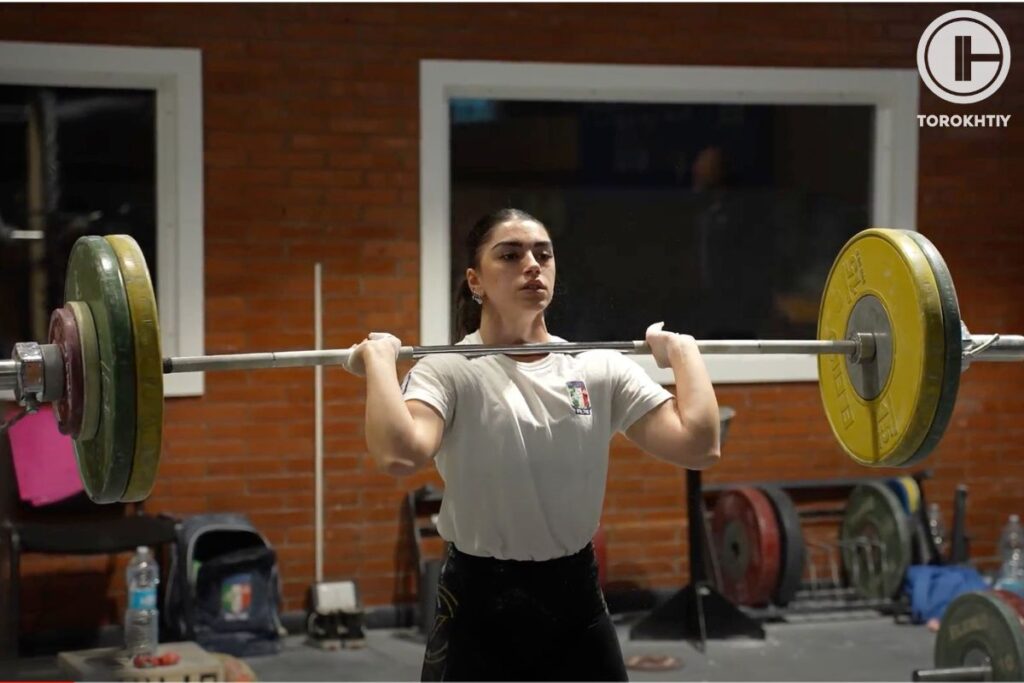
- Well-directed effort. When pushing the bar upwards with one´s legs, the arms work in the same direction, which makes it possible to apply more force to the barbell.
- When fixing the barbell above the head with a narrow grip, the inclusion of joints and the stability of the skeleton are more reliable.
- There is no need to intercept the barbell after the jerk. This often creates a lot of difficulties for inexperienced athletes, as well as for athletes whose shoulder girdle mobility is not well developed.
A wide “Bulgarian-Colombian grip” – peculiarities, advantages, disadvantages:
Obviously, tall athletes need to take the barbell wider, simply because they have longer arms and need to lift the barbell and spend more time and energy on it. Wider grip reduces these indicators. But we also see a lot of athletes (from Colombia again) that are not tall at all and perform in low weight categories and do it exactly that way.
Wide grip requires special skills to intercept the bar. Some athletes change the wrists at the time of throwing the bar when recovering from the squat. This skill requires high accuracy and coordination, as sometimes athletes do not immediately get the wrists at the right distance and they have to re-throw the barbell, for example, weighing 220 kg (just imagine it). Colombian athletes have excellent mobility of the upper shoulder girdle and have a well-developed rack position, so they can freely move their wrists along the bar length.
There is also a different interpretation of the difficulty of holding the barbell above the head with a wide grip. Some coaches say that the inclusion of elbow joints is more effective with wide grip, but it must be remembered that this creates additional angular pressure on the wrists, elbows and shoulders, which requires stronger arms, shoulders, stabilizer muscles, as well as coordination and balance, which increases the risk of losing the barbell with minimal forward or backward movement.
It is also often discussed that with a wide arm positioning there are significantly fewer opportunities to use the elastic properties of the bar as the area of bearing of the bar with the body increases.
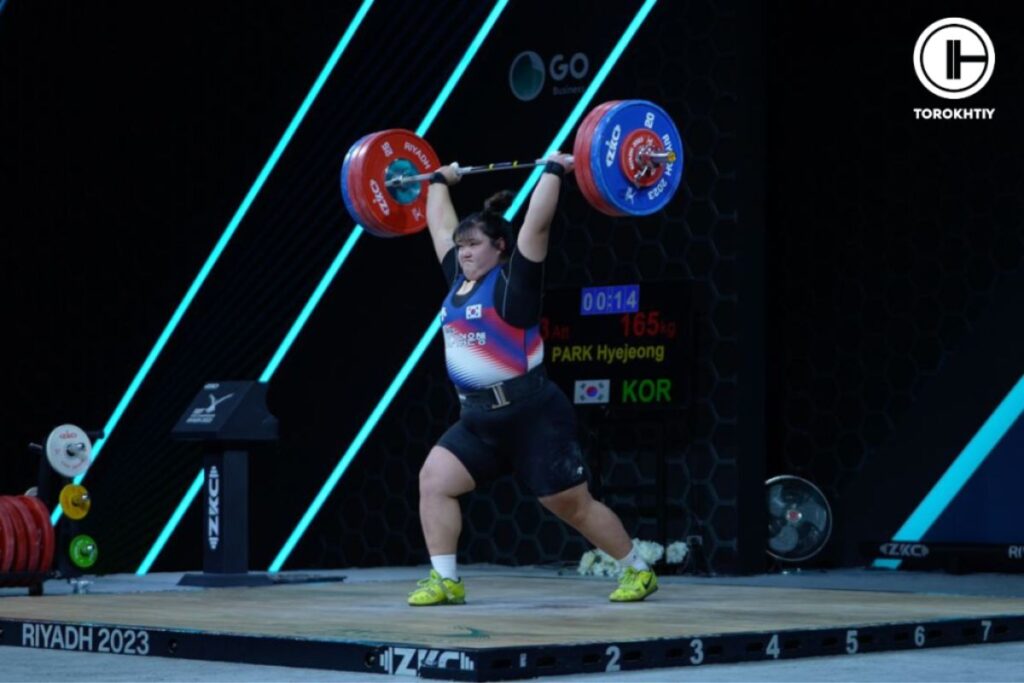
Summing up, we can say that the advantages of the wide grip include:
– shorter barbell way;
– shorter time;
and disadvantages:
– increased and specific requirements for the flexibility and mobility of the shoulder girdle;
– additional angular pressure when fixing the barbell above the head;
– specific requirements for muscle stabilizers, balance and coordination.
🔻12-Week Olympic Weightlifting Program by Oleksiy Torokhtiy
Transform your strength and technique with our 12-week Olympic Lifting Program, made up of 5 sessions per week.
It is designed by Olympic Champion for athletes who are looking to set new personal records safely in Snatch or Clean & Jerk.
Program details:
- 12 weeks + 2 bonus weeks
- 45-120 minutes per session
- 50+ specific exercises/98 video instructions
- Primary focus on Olympics Lifts
- Full access to all training content
- Weekly video coach instructions
Start now and boost your weightlifting results!
A frequent question that I am asked at the seminars is whether to use wrist wraps when performing a jerk during trainings and competitions. I believe that beginners training does not require any additional equipment, except the boots, straps and a thumb tape. As for experienced athletes, the use of a belt and knee sleeves, including wrist wraps, should begin after the loads of 70% or more. Ligaments and small muscles need to be trained too, so you shouldn’t immediately wrap yourself up. It looks rather strange when an athlete looks like a mummy before the start of the workout)))
NOTE: This absolutely does not mean that one grip is better than the other. Much depends on the athlete’s anatomy, his age, experience, training methods. In order to find “your grip” – you need to experiment, but do it wisely and carefully.
TRAIN TOGETHER – TRAIN RIGHT
You might be interested in:
Why Trust Us?
With over 20 years in Olympic Weightlifting, our team does its best to provide the audience with ultimate support and meet the needs and requirements of advanced athletes and professional lifters, as well as people who strive to open new opportunities and develop their physical capabilities with us.
By trusting the recommendations of our certified experts in coaching, nutrition, dietology, and sports training programming, as well as scientific consultants, and physiotherapists, we provide you with thorough, well-considered, and scientifically proven content. All the information given in the articles concerning workout programming, separate exercises, and athletic performance, in general, is based on verified data. We ensure that you can rely on our professionals’ pieces of advice and recommendations that can be treated as personalized ones which will benefit you and fully meet your needs.
The product testing process is described in more detail here
Author: Sergii Putsov
Head of Sport Science, PhD
Best Results: Snatch – 165 kg,
C&J – 200 kg
Sergii Putsov, Ph.D., is a former professional weightlifter and National team member, achieving multiple medals in the 94 kg weight category at national competitions. With a Master’s degree in “Olympic & Professional Sport Training” and a Sport Science Ph.D. from the International Olympic Academy, Greece, Sergii now leads as the Head of Sport Science. He specializes in designing training programs, writing insightful blog articles, providing live commentary at international weightlifting events, and conducting educational seminars worldwide alongside Olympic weightlifting expert Oleksiy Torokhtiy.






